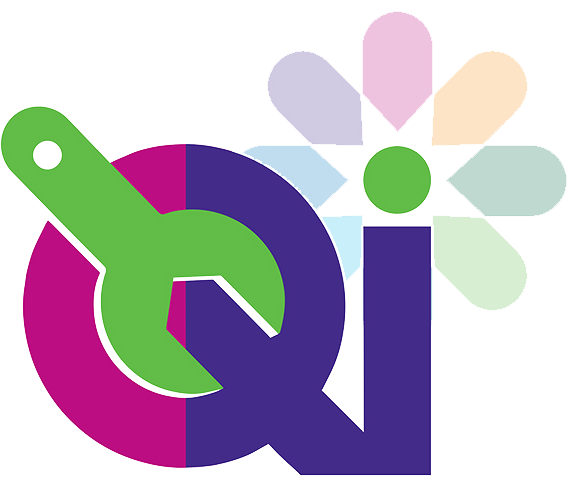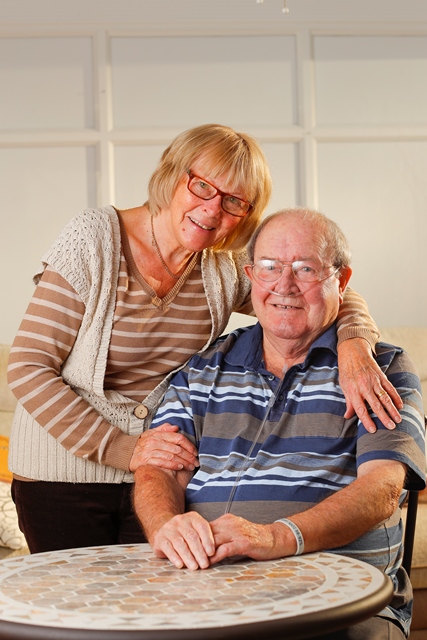Kent Community Health NHS Foundation Trust (KCHFT) is believed to be the first in the country to be pioneering a simple but effective wristband, for patients with breathing problems.
The wristbands are for patients at risk of type two respiratory failure. The project involves these patients being given a coloured wristband, which tells health professionals how much oxygen they need, should they become unwell.
The wristbands correspond with those being used in hospitals, enabling ambulance and accident and emergency staff to initiate the appropriate level of oxygen for the patient. It also reduces the risk of giving too much oxygen in an emergency situation.
Result so far are promising.
Robin Levett, 79, from Ashford, is just one KCHFT patient who has an oxygen wristband. Three years ago, he was taken to hospital by ambulance from his home after a cough developed into an infection, leaving him fighting for breath and with type two respiratory failure. He is still isn’t in the best of health – he has Chronic Obstructive Pulmonary Disease (COPD) – with his condition being managed through regular oxygen treatment. He can be hooked up to the machine at his home in Ashford, for 15 hours a day. But it doesn’t get him down.
He said: “Oxygen has given me my life, it’s saved my life.”
From Robin and his wife Sue’s point of view, what has helped even more is the oxygen wristband he now wears. It means that he never has to worry if he has to go into hospital, as medical teams will give him the level of oxygen he needs.
The oxygen wristbands pilot is one of our quality improvement projects.
KCHFT’s east Kent Professional Lead Sheilagh McCrossan said: “The results so far are very promising and do seem to indicate that the project has reduced admissions to hospital with type two respiratory failure, and is reducing the length of stay for patients being admitted with a flare up of their COPD.”
It was while Sheilagh was working with Kent Surrey Sussex Oxygen Network that the idea for oxygen wristbands for community respiratory patients was born. The network was beginning to use saturation wristbands in hospitals, something first piloted in the north of England. This initial pilot had shown positive outcomes and it was then Sheilagh questioned whether this work was transferrable to the community.
The pilot began in November 2018. Following a comprehensive assessment, patients are issued with a coloured wristband indicating target oxygen saturations appropriate for them when they are unwell.
For retired Robin, who worked in the oil industry, it has made a significant difference. For a start, it has given him a better quality of life than he may have experienced. Although, he can no longer play his beloved bowls or golf, he can still get out and about with Sue, who he has been married to for 43 years, and their two children, three grandchildren and two great grandchildren.
Sue, 77, said: “It would be really easy to just have stayed at home, been depressed and lost his social life and confidence. Although he was very down after that first hospital stay, the oxygen, motivation and boost from the team, who have become good friends, has meant he’s got to grips with it all and wants to get out.”
The wristband proved its worth when Robin was unfortunately admitted to hospital again in the autumn for a few days. He said: “The teams saw the wristband and knew my target oxygen levels; it was really helpful because too much can be dangerous.
“The wristband is always on and so I know that wherever I am, the medical people will know what oxygen to give me – I’d be unlikely to be able to tell them if I’m breathless.”
Much of the support given to patients in east Kent from the respiratory team is focused around supporting self-management and enabling patients to have a better understanding of their health and wellbeing.
Specialist Respiratory Nurse Lauren Mackenzie said: “Robin has also attended our rehabilitation group and has said how much that helped too.”
Respiratory Nurse Merlyn D’Cruz said: “Robin first came to us after he was admitted to William Harvey Hospital. He was diagnosed with COPD about nine years ago. We have worked with him through self-education and self-management.
“I think what happened was a shock to him as he had not been unwell, but he has coped very well. We taught him what oxygen does and how he can monitor his symptoms, so he can try to prevent further hospital admissions. The wristband is helping with that too.”



